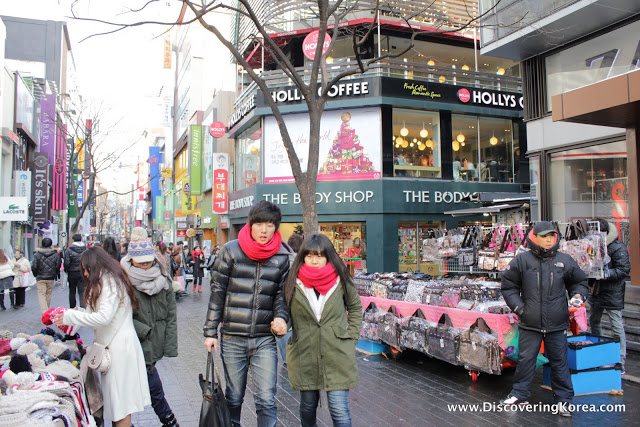If you had to guess Seoul’s number one tourism destination, what would it be? Well, it’s not one of the city’s five palaces, the Cheonggyecheon Stream or Namsan Park and N Seoul Tower.

In fact, the most popular spot for foreign tourists is the Myeongdong Shopping District in Seoul, the city’s fashion, shopping and culture hub.
This one-square-kilometer Myeongdong Shopping District in Seoul sees some two million visitors every single day!
And given its central location, high volume of foot traffic, and cachet as a heart of cutting-edge Korean youth culture, Myeongdong merchants pay among the world’s highest rents.
Although Seoul has many shopping districts, northern Seoul destinations like Dongdaemun Market (동대문시장) or Namdaemun Traditional Market (남대문시장) focus primarily on low-price, fast fashion.

By contrast, Myeongdong Shopping District in Seoul is where you can find mid- to high-priced luxury and designer brands. Surprisingly, it was only in the 1970s that Myeongdong became a major shopping destination.
During the Joseon Dynasty, the area was known as Myeongryebang, and served both as Seoul’s administrative capital and also as a residential area.
During the Japanese colonial era, the neighborhood was known as Myeongchijeong and started to become a bustling commercial district, following Chungmuro to the east.

But it was only in the decades following the Korean War that Myeongdong truly flourished as a shopper’s paradise.
Whatever the era, the neighborhood or many names has always included the Chinese character “myeong” in its title. It means “brightness,” and after dusk the neon signs from large, multi-floor shopping centers like Migliore, new upscale malls like Noon Square, stand-alone chain stores and boutique shops all vie for shoppers’ gaze.
Young women clad in pink and white stand outside shops to advertise special deals via intercom in Korean, Chinese or Japanese.
Street vendors also make use of Myeongdong’s streets, selling everything from luxury knock-offs to delicious treats. One impressive spectacle is watching a long line of carts race across several lanes of busy traffic on their way to set up shop for the day, or head home for the night.

Although today we take it for granted, the Myeongdong Shopping District in Seoul really took off as a tourism destination in the early 2000s with the rise of the Hallyu Korean cultural wave.
Watching as huge numbers of Japanese and other foreign tourists flocked to the area, the city designated Myeongdong a special tourism district in 2000.
Now, while shopping may be the Myeongdong Shopping District in Seoul‘s primary draw, add to the mix scores of restaurants serving Korean and foreign fare, cafés, hair salons, cinemas and hotels.
The area is also home to two prominent cultural institutions. The impressive Myeongdong Cathedral (명동대성당) is among Seoul’s oldest houses of worship and an important site during Korea’s democratization movement.
And located at the intersection of Myeongdong’s two major streets is the recently renovated Myeongdong Theater.
Speaking of those streets, most of the roads are off-limits to car traffic during the day, which is good since they’d have an awfully slow go of it, given the throngs of shoppers that pound Myeongdong’s streets around the clock.
About Matt Kelley
Matt Kelly is native of the US Pacific Northwest and is half-Korean by ethnicity. He lived in Korea for five years and has written hundreds of travel guides for Wallpaper, TimeOut, the Boston Globe and Seoul Magazine and was a host for several different variety shows on Korean radio and television.
